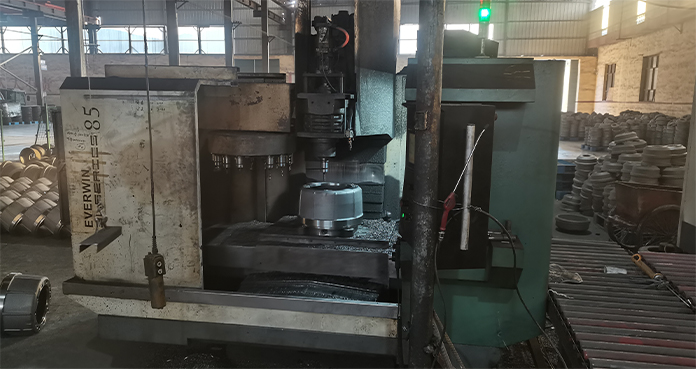Nov . 21, 2024 04:25 Back to list
material of brake drum
The Material Composition of Brake Drums An In-Depth Analysis
Brake drums play a critical role in the braking systems of various vehicles, especially those equipped with drum brakes. Understanding the materials used in their construction is essential for both vehicle performance and safety. This article delves into the various materials that are commonly used to manufacture brake drums, their properties, and the advantages and disadvantages of each, thereby offering insights into how these materials contribute to overall vehicle safety and performance.
Common Materials Used in Brake Drum Manufacturing
1. Cast Iron Cast iron is the most widely used material for brake drums due to its excellent thermal conductivity, wear resistance, and strength. This alloy of iron, carbon, and silicon is relatively inexpensive to produce and offers good performance in various operating conditions. Cast iron’s capacity to absorb and dissipate heat makes it particularly suitable for high-performance applications, as it minimizes the risk of brake fade during prolonged braking. Moreover, the durability and longevity of cast iron ensure that brake drums can withstand the wear and tear of everyday use.
2. Aluminum Alloys Aluminum is increasingly being used in brake drums for lightweight applications. Aluminum alloys offer a significant reduction in weight compared to cast iron, which can enhance overall vehicle performance by improving fuel efficiency and acceleration. Furthermore, aluminum has good thermal conductivity, helping to dissipate heat generated during braking efficiently. However, aluminum brake drums may not provide the same level of wear resistance as their cast iron counterparts, making them less suitable for heavy-duty applications or vehicles that demand high braking performance.
3. Composite Materials Some manufacturers are exploring composite materials for brake drums. These materials, which may consist of a combination of metals and synthetic materials, offer unique properties such as enhanced strength-to-weight ratios and better resistance to corrosion. Composites are particularly advantageous in environments where exposure to moisture and corrosive substances is a concern. However, the technology is still developing, and the cost associated with composite manufacturing can be higher compared to traditional materials like cast iron.
Properties that Influence Material Selection
When selecting the appropriate material for brake drums, several properties are considered
material of brake drum

- Thermal Conductivity The ability of a material to conduct heat affects how well the brake system will perform under stress. Good thermal conductivity helps in dissipating heat, preventing brake fade. - Strength and Durability Brake drums must withstand significant stress and wear during operation. The selected material should thus possess high tensile strength and durability. - Weight Vehicle manufacturers often strive to reduce the weight of components to improve fuel efficiency. Lightweight materials, while beneficial, should not compromise safety or performance. - Cost Economic considerations play a significant role in material selection. The chosen material must provide a balance between cost-effectiveness and performance.
Advantages and Disadvantages
Cast Iron - Advantages High strength, thermal stability, and cost-effectiveness. - Disadvantages Heavier than aluminum; vulnerable to rust if not properly coated.
Aluminum Alloys - Advantages Lightweight and good thermal dissipation. - Disadvantages Higher costs and potentially less durable in severe conditions.
Composite Materials - Advantages Corrosion resistance and weight reduction. - Disadvantages Generally more expensive and not yet widely used in mainstream applications.
Conclusion
In summary, the material composition of brake drums is an essential factor that affects vehicle safety, performance, and efficiency. While cast iron remains the dominant material due to its excellent properties, the automotive industry is gradually moving towards lighter alternatives such as aluminum alloys and composite materials. Each material has its unique advantages and drawbacks, making it crucial for manufacturers to consider the specific demands of their vehicles and the driving conditions they will face. As technology advances, it is likely that new materials and manufacturing processes will continue to evolve, enhancing the effectiveness and safety of brake systems in the future. Understanding these materials not only helps manufacturers make informed choices but also informs consumers about the significance of quality components in maintaining vehicle safety.
-
HINO Industrial Efficiency-Jiangsu Hino Industrial|Productivity Optimization&Cost Reduction
NewsJul.12,2025
-
HINO-¡Ң���ຽ��е��������˾|Advanced Industrial Solutions&Energy Efficiency
NewsJul.12,2025
-
Premium Brake Drum Iveco – Durable Drum Brake Drum & Brake Shoe Solutions
NewsJul.08,2025
-
High-Performance Brake Drum Liza for Enhanced Safety Reliable Drum Brake Drum & Brake Shoe Solutions
NewsJul.08,2025
-
High-Quality Brake Drum MAZ – Durable Drum Brake Drum & Brake Drum and Brake Shoe for Optimal Performance
NewsJul.07,2025
-
High-Quality Brake Drum Kamaz for Reliable Performance Durable Drum Brake Drum & Brake Shoes
NewsJul.07,2025
